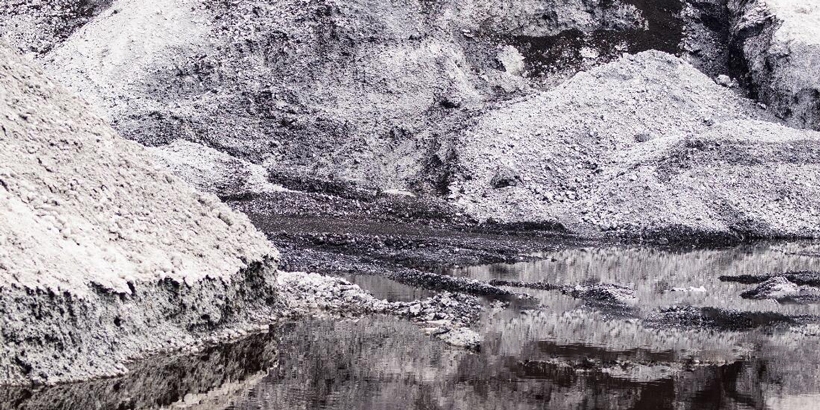In recent years, climate change has emerged as a critical issue with far-reaching impacts on various aspects of our environment and infrastructure. One area that has gained increasing attention is the heightened risk climate change poses to coal ash ponds. Power Home will explore this issue a bit.
It’s not difficult to find data that showcases the threat of climate change. For example, the National Oceanic and Atmospheric Administration announced that June 2019 was the hottest June ever recorded, with records going back to 1880. The prior high came in 2016, and nine of the hottest 10 Junes have come since 2010. On top of that, June marked the 414th consecutive month that the Earth’s temperature was warmer than average. That number starts back in 1984 during President Ronald Reagan’s first term.

With warmer temperatures comes the greater potential for stronger storms and the resulting issues they cause. That makes flooding a potential problem, and that can be a big concern for power companies that have coal ash ponds where federal officials have labeled as places in high risk for flooding.
According to government and industry data examined by POLITICO, at least 101 U.S. coal ash sites are deemed being in what the Federal Emergency Management Authority (FEMA) calls a Special Flood Hazard Area, where FEMA estimates there is at least a 1 percent chance of the area flooding in any given year. Hence the common term, “100-year storm.” Forty-two of the 101 coal ash sites in POLITICO’s coal ash study are in the Southeast, where Powerhome has a significant presence.
We have seen the potential damage flooding can bring during Hurricane Florence, when a dam breach flooded a coal ash pond at the L.V. Sutton Power Station near Wilmington, North Carolina. That raised concerns about contaminants getting into the nearby Cape Fear River. However, a North Carolina Department of Environmental Quality spokesperson recently told The Associated Press that it found no health or environmental concerns in the surface water near or downstream from the breach site.

Beyond flooding concerns like this recent example, POLITICO notes that there’s also concern that flooding could raise groundwater levels, where seepage from unlined ponds could contaminate groundwater. Even without rising groundwater levels, what’s already concerning is that 91 percent of the 250 coal plants that are reporting groundwater data show groundwater having toxic substances at levels exceeding federal safe standards, according to a report by EarthJustice.org.
POLITICO notes that its report about the coal ash ponds in Special Flood Hazard Areas come with significant caveats:
Flood-risk information wasn’t available for every site, and consistent documentation didn’t exist for many long-dormant coal ash sites, so POLITICO eliminated dozens of locations from its results. The results also don’t account for some utilities’ ongoing efforts to remove their coal ash. And some FEMA maps POLITICO reviewed were last updated in the 1970s.
A full analysis of any particular site’s flood risk would have to look at a range of factors, such as a pond’s elevation as well as its structural engineering, said Alan Lulloff, chief scientist at the Association of State Floodplain Managers’ Flood Science Center.
So determining a fully accurate number of coal ash ponds in areas prone to flooding would be difficult, given the facts in play. But the fact remains that coal ash ponds contain toxic waste, and these problem ponds aren’t going away anytime soon.
Why is Coal Ash a Problem for the U.S.?
Coal has long been one of the top choices of power companies to generate electricity, and burning coal results in the formation of coal ash, which contains contaminants such as mercury, cadmium and arsenic. As described above, there is considerable concern that coal ash can pollute waterways, groundwater, not to mention drinking water and the air. There’s also the risk of those being exposed to these contaminants becoming sick.
As power companies continue to deal with their coal ash problems, they most likely will be coming to ratepayers to help clean up the mess. Whether the ponds are excavated and placed in lined ponds to prevent any potential contamination or they are simply capped in place, there will be costs associated with that.
Powerhome Provides Choice of Clean Energy

Powerhome offers the choice of where power customers can get their energy, and our solar systems offer clean, green energy for the duration of their lifespan. There are no carbon emissions that come from generating solar energy. Our solar panels for residential customers come with a 30-year warranty, meaning that you have clean energy for decades. Once you pay your PV panels off, you’ll be generating energy that’s free to you. That’s how you can own your power, and not just endlessly rent it from the power company.
Powerhome does everything in preparation for your solar panel installation, and then it also installs your solar panels with its own employees. We feel that owning the entire process is the best way to give our customers the greatest level of satisfaction with our work.
Call us today to learn more about whether your home would benefit from solar panels. We want to do everything to stem the tide of climate change, and going solar at your home is a step in the right direction. Every solar system installed means less reliance on the power companies, which still generate the majority of their power through fossil-fueled sources that produce climate-changing greenhouse gases. You can initiate the change for your family and future generations by calling us today.
(1).png)
(1).png)